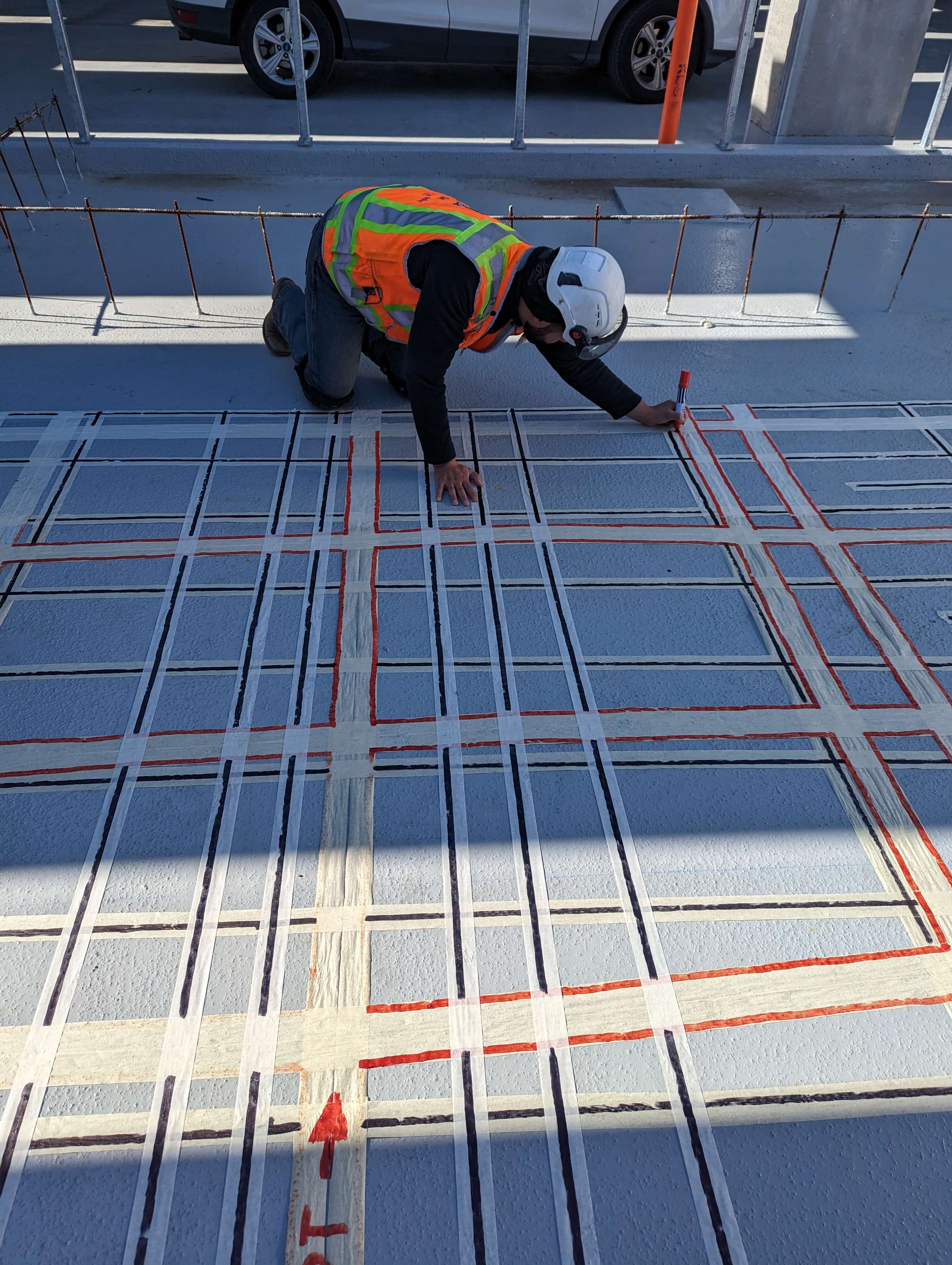Extensive Insights right into Concrete Scanning Procedures
Extensive Insights right into Concrete Scanning Procedures
Blog Article
Past the Surface: Leveraging Advanced Concrete Scanning Techniques for Unmatched Precision and Insight
In the realm of building and construction and facilities maintenance, the mission for precision and thoroughness is unending. Advanced concrete scanning strategies have become vital devices in this quest, offering a look beneath the surface area to unveil a world of essential understandings. By taking advantage of advanced modern technologies, experts can uncover abnormalities, evaluate the problem of concrete structures, and make notified choices that form the course of tasks. The implications of these strategies extend much past simple surface-level analyses, promising a deepness of accuracy and understanding that is unmatched.
Significance of Advanced Concrete Scanning
The relevance of making use of innovative concrete scanning techniques hinges on the exceptional precision they provide for finding sub-surface abnormalities and making certain architectural stability. By using advanced innovations such as ground-penetrating radar (GPR), electromagnetic induction, and advanced finder imaging, building specialists can dive under the surface area of concrete structures with a level of accuracy that much goes beyond traditional inspection methods. Concrete Scanning. These techniques enable the identification of hidden dangers like rebar rust, spaces, channels, or post-tension cable televisions that could compromise the stability and safety of a structure with time
Moreover, progressed concrete scanning supplies very useful insights into the total problem of a concrete aspect without the need for intrusive procedures, decreasing the threat of triggering damage throughout the evaluation process. The capacity to pinpoint the exact area and depth of potential concerns permits targeted repairs and upkeep, inevitably prolonging the life expectancy of the structure and maximizing its performance. Basically, the value of sophisticated concrete scanning can not be overemphasized in the world of construction and framework maintenance, where accuracy and integrity are critical.
Sorts Of Cutting-Edge Technologies

Anomalies and Issue Discovery

In enhancement to GPR, concrete scanning strategies like thermography and impact-echo testing are likewise efficient in detecting abnormalities and flaws. Thermography utilizes infrared technology to identify variations in surface area temperature, indicating potential areas of concern such as delamination or moisture access. On the various other hand, browse around this web-site impact-echo screening includes assessing acoustic reactions to find gaps, splits, and various other flaws within the concrete. By leveraging these sophisticated methods, experts can proactively address architectural concerns, making certain the long life and security of concrete frameworks.
Assessing Concrete Problem
Exactly how can engineers properly examine the condition of concrete frameworks to ensure their longevity and security? Evaluating the concrete problem is a crucial element of maintaining framework stability. Various innovative concrete scanning techniques are used for this function. Ground-penetrating radar (GPR) is commonly utilized to analyze the interior structure of concrete, spotting spaces, fractures, and various other abnormalities that may jeopardize its stamina. Furthermore, impact-echo screening can supply understandings into the density and honesty of concrete components. Ultrasonic pulse speed screening is another useful method for examining concrete high quality by measuring the rate of acoustic waves through the material.
Incorporating non-destructive screening techniques with visit this site visual evaluations allows for a comprehensive analysis of concrete problem, allowing engineers to identify possible issues early on and carry out timely maintenance or fixings. By leveraging these sophisticated techniques, engineers can make certain the long-term resilience and safety and security of concrete frameworks.
Enhancing Decision-Making Processes
In the world of infrastructure management, maximizing decision-making processes is vital for making sure the effective upkeep and longevity of concrete frameworks. Improved decision-making procedures in concrete administration involve making use of advanced scanning strategies to collect detailed information on the problem of frameworks. By leveraging modern technologies such as ground-penetrating radar and 3D imaging, stakeholders can make enlightened choices pertaining to repair service, replacement, or reinforcement strategies.
These advanced scanning techniques offer very useful understandings into the internal structure of concrete, determining possible problems such as spaces, fractures, reference or deterioration that may not be visible on the surface area. This degree of in-depth info enables proactive upkeep planning, minimizing the risk of architectural failures and boosting the total life-span of concrete structures.
Moreover, by incorporating electronic paperwork and analysis devices into the decision-making procedure, stakeholders can track the evolution of concrete problems over time, making it possible for anticipating maintenance strategies and optimizing resource allotment. Ultimately, the assimilation of innovative concrete scanning methods enhances decision-making processes by providing unparalleled precision, insight, and efficiency in framework administration.
Final Thought
Finally, advanced concrete scanning strategies offer unparalleled accuracy and understanding in discovering abnormalities, issues, and examining the condition of concrete structures. By leveraging innovative modern technologies, decision-making procedures can be enhanced, resulting in even more efficient and informed options for maintaining and repairing concrete infrastructure. These techniques play an essential function in ensuring the safety and security and durability of concrete frameworks, making them an indispensable tool in the field of construction and engineering.
Additionally, progressed concrete scanning provides very useful insights right into the general problem of a concrete aspect without the requirement for intrusive measures, reducing the risk of triggering damage during the assessment procedure - Concrete Scanning. An additional ingenious modern technology is 3D X-ray scanning, which supplies in-depth pictures of the interior framework of concrete, using useful info without the demand for damaging screening. Furthermore, Concrete Cover Meters are made use of to determine the density of concrete cover over reinforcement bars accurately. Boosted decision-making procedures in concrete administration involve utilizing advanced scanning strategies to collect in-depth data on the condition of frameworks.In final thought, progressed concrete scanning methods offer unmatched accuracy and insight in spotting anomalies, defects, and analyzing the condition of concrete frameworks
Report this page